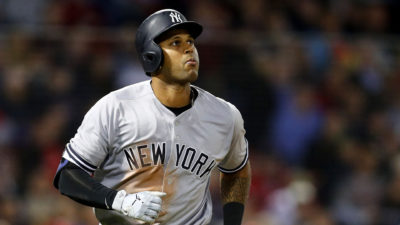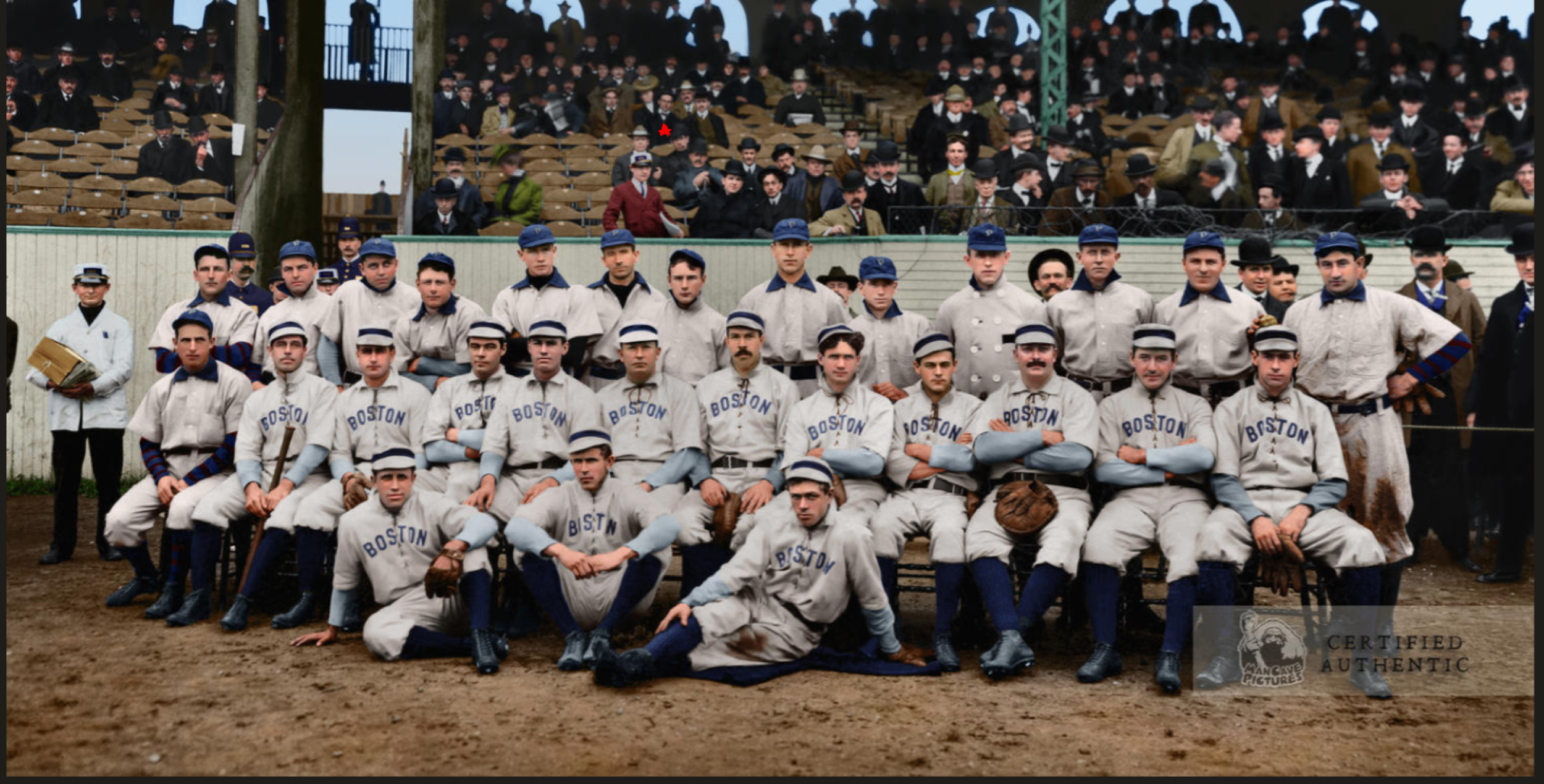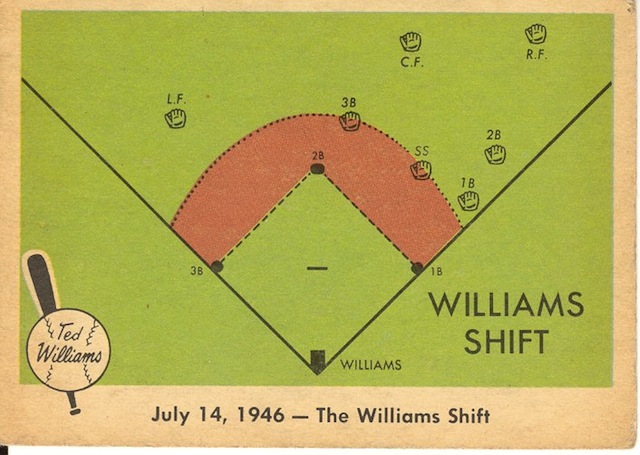Featured Photo Above:
Combined 1903 World Series Photo: Pittsburgh Pirates and Boston Pilgrims
(Color Restoration by Chris Whitehouse of Mancave Pictures)
Baseball History Comes Alive Now Ranked As a Top Five Website by Feedspot Among All Baseball History Websites and Blogs!
(Check out Feedspot's list of the Top 35 Baseball History websites and blogs)

Guest Submissions from Our Readers Always Welcome! Click for details
THE BASEBALL HISTORY COMES ALIVE BLOG
Please note: As we compose new blog entries, we will now send each one out to all our subscribers as we post them. Here’s a link to see the entire Blog Archives -GL
March 21, 2021
New Blog Topic: ARE THE HITTERS BEGINNING TO LOOK DIFFERENTLY AT THE SHIFT
There has been a lot of talk about the shift in baseball this spring, including here in these pages. Some feel it should be banned, others vote for modifying it, while still others say leave it alone and let the hitters find a way to beat it. I’m a proponent of the latter solution. My feeling has always been that if the hitters learned to go the other way and used the bunt, that would eventually take care of the shift and relegate it to just certain situations. It would become an occasional strategy, not the norm it has become today.
Just the other day there was a ray of hope from an article in the New York Post. It concerned New York Yankees centerfielder, Aaron Hicks. Hicks is a switch hitter with

some power. When he bats from the left side he often finds himself facing the shift and apparently it has become frustrating for him. He acknowledged the hard-hit grounders and line drives that normally would have been hits are turning into outs due to the shift. The story also listed data from Sports Info Solutions that tracks batted balls into the shift. It showed that Hicks suffered a net loss of 11 potential hits over the past three years due to the shift.
All of this apparently got Hicks to thinking and, surprise, he came up with a potential solution. It’s a very old one and one currently in the majors taboo according to analytics. It’s the bunt. Hicks was quoted as saying, “I feel like it’s there for me. I have plenty of speed to get to first and get hits that way. I feel like it just kind of sets up the rest of my day, to even start the day off with a bunt. No one’s on, big huge shift and nobody’s on third base, and kind of take advantage of it because it’s there for me. I’ve kind of been overlooking it. I’ve hit [into] the shift way too much to kind of earn respect for it. So I think adding the bunt to my game is definitely going to create some problems.”
Hicks has only bunted once in the past two seasons and it wasn’t successful. Like so many others, he’s tried to overpower the shift or hit over it so he can circle the bases. He isn’t a superstar, but when healthy he’s a fine overall player, on both offense and defense, so for him to be thinking bunt just could be a step in the right direction, especially if he can do it successfully. He’s already laid one down the third baseline for a hit in a spring training game.
He continued. “I feel like by adding a bunt, being able to use the middle of the field a little bit more, [it] will definitely take away that huge shift on the right side and ultimately give me more chances to get more hits,” Hicks explained. His manager, Aaron Boone, seemed to agree.
“I think it’s one of those things that, if you demonstrate you can do it even once, it’s something that gets on the board with an opposing team and their scouting report,” Boone said. “It all of a sudden makes you have to make a real-time decision about how you’re going to defend, if you’re going to sell out and still move the third baseman. I do think there’s certainly a place for it, especially when you can do it. It’s something we’ve encouraged Aaron to do, and it’s obviously something he’s capable of doing. Even if you do it a couple times and you’re successful, it goes a long way in changing how they play you and eventually opening up more of the field.”
How interesting. Could this be the crack needed for others to squeeze through? What a novel idea, dropping a bunt down the third-base line when the third baseman isn’t there. It may only be a paltry base hit, not the majestic home run so many people seem to love. But it puts the ball in play, gets a runner on and just might make the defense think twice about using the shift. Imagine if an opposite-field double followed. That just might be a formula for winning ball games. And not striking out while swinging for the fences.
Bill Gutman
As always, we enjoy reading your comments
Here’s a link to see the entire Blog Archives



If Hicks thinks it will work for him…go for it…we’ll see how he does after a full season. But for a majority (like maybe 98%) it won”t. Couple issues…Gary cited the $$…plus virtually every pitcher throws a variety of pitches, mostly in the mid to upper 90’s with a number now hitting 3 digits! The last few years we have seen the high strike zone fastball used more and more. All the above would make it somewhat difficult to lay down the “sure hit” bunt. Don’t forget with the shift on the pitchers are responsible for covering that area.
I still say…two infielders on either side of 2nd base with both feet in the dirt before the pitcher starts his delivery. If they want to run around once the pitcher goes into his windup…good luck with that.
I get what you’re saying, Pat, but I hate to see baseball begin to legislate where fielders can and can’t play. You don’t see a lot of bunting for two reasons. Analytics says it’s a bad play, giving teams a free out. And many of today’s players simply don’t know how to bunt. If they were taught and practiced they would become capable. Do you really think that great bunters like a Phil Rizzuto or a Rod Carew couldn’t bunt against today’s pitchers? They could and would. In theory, it may be the pitcher’s responsibility to cover that area. But if the bunt is pushed past them down the third base line they won’t get it. And since few bunt today, pitchers are not adept at fielding them. Have you ever noticed how many pitchers either slip or throw wildly to first when fielding a bunt or a a slow chopper in front of the plate? It’s the same reason why hitters don’t go to the opposite field more. They don’t know how today. They’re more concerned with launch angle and hitting the ball in the air to add to the home run derby the game has become.